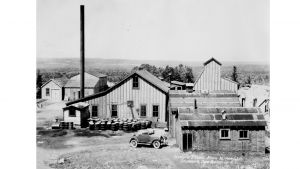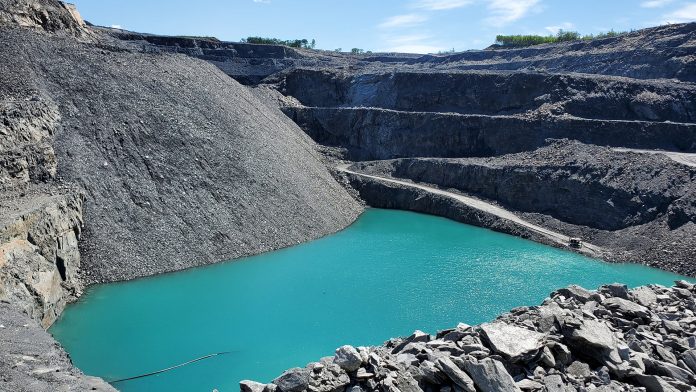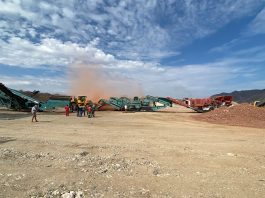Sean Kirby, Executive Director of the Mining Association of Nova Scotia, discusses the rapid demand for critical minerals and explains how Nova Scotia’s mining industry is working to meet this demand.
The transition to clean energy is creating exciting opportunities in Nova Scotia’s mining industry, and mining industries around the world, because clean energy and all climate goals are made possible by mining.
Achieving net-zero emissions globally by 2050 would require six times more minerals in 2040 than today, according to the International Energy Agency (IEA), because: “The transition to clean energy means a shift away from a fuel-intensive to a material-intensive system.”1
In other words, more emissions are generated up front to provide the raw materials green technologies are made of, but they generate fewer emissions over their lifetimes because they do not consume fuel.
Providing those minerals and metals is a huge challenge for the world’s mining industry. We need more mines, and we need them quickly to achieve climate goals.
How EVs are accelerating mineral demand
Take electric vehicles (EVs) as an example. The IEA states that “a typical electric car requires six times the mineral inputs of a conventional car,” mainly because EV batteries are so mineral-intensive. For example, lithium supply needs to grow sixfold by 2030 to meet electric vehicle adoption targets, “requiring the equivalent of 50 new average-sized mines.”2
Copper is another example of why EVs are so mineral intensive because it is used in every major component, from the motor to the inverter and the electrical wiring. EVs contain about four times more copper than internal combustion engine cars do – 183 pounds of it. That is about 6km of copper wire per EV.
Upcoming mineral shortages
Many experts are predicting shortages in key minerals given this huge new demand. For example, a 2022 report by analysts at S&P Global warned that “Unless massive new supply [of copper] comes online in a timely way, the goal of net-zero emissions by 2050 will be short-circuited and remain out of reach.”3
We are already seeing mineral shortages affect EV supply.
Elon Musk said last year that Tesla may not achieve its goal of building 20 million electric cars per year by 2030 – a goal he had set less than a year earlier. He is now calling the goal an “aspiration, not a promise…We may stumble and not reach that goal. There are some raw material constraints that we see coming, in lithium production, probably in about three years, and in cathode production.”4
Keeping pace with rising mineral demand
Why not just increase mining of these minerals to solve the supply problem?
The process of exploring for mineral deposits and getting permits to operate a mine takes so long that it is hard to see how all these additional minerals can be supplied to meet climate goals. The IEA says it takes an average of 17 years to put a mine into production, whereas The International Monetary Fund says it takes 19 years. That means a mineral deposit discovered today would not get into production until at least 2040.
Governments need to work with their mining industries to address the mineral supply challenge. A Reuters column stated: “Governments will have to do much more to speed up permitting and environmental approvals, and finally, those with an interest in meeting the net-zero by 2050 will have to overcome their innate distaste for mining.”5
The transition of Nova Scotia’s mining industry
We say in the mining industry that new mines are often found next to old mines. Nova Scotia had many historical mines for what are now called critical minerals. Those early mines proved we have the geology for critical minerals and that Nova Scotia’s mining industry can contribute to the global supply of these essential materials today. Below are some examples.

Copper was first found at Coxheath, Cape Breton, in 1875. The area was mined intermittently until 1930 when the Great Depression caused operations to cease. The site has been explored by a series of companies since the early 1950s and today we know that it also contains other important metals, including gold, cobalt, silver, and molybdenum. Learn more at https://novacopper.ca/.
The mine’s value has never been more obvious as the world rushes to find and develop critical mineral deposits. Copper is essential to green technologies because it is used in most electrical wiring. The more renewable energy we generate and the more electric vehicles we build, the more copper we will need.
The past-producing Scotia zinc mine is expected to restart production in 2024. It was last mined in 2008 when depressed metals prices put it on hold.6
Zinc is a critical mineral because it is used as an alloy to galvanise steel and prevent corrosion. For example, wind turbines require six tons of zinc per megawatt of capacity because wind turbines are mostly steel.
The East Kemptville tin-indium mine is another past producer that we hope will return to production given the importance of those two metals today.7 For example, solar panel manufacturers use tin solder ribbon to join solar cells.
The East Kemptville orebody was discovered by Shell Canada Resources in 1979 and was sold to Rio Algom in 1983. It was the world’s largest concentrator of tin – 9,100 tonnes of ore per day – for several years in the late 1880s and early 1990s until a collapse in global tin prices caused the mine to shut down. The mine also produced copper and zinc concentrates. Today, we refer to it as a tin-indium deposit because it has what are believed to be economically viable amounts of indium in it. Unlike when the East Kemptville mine was last in production, indium is in high demand now because it is a key ingredient in things like electronics’ touch screens and solar panels.
Lithium is probably the first metal that comes to mind for many people when electric vehicle batteries are mentioned. Nova Scotia had a rush in staking for lithium in 2022 because of the province’s exciting potential for it. For example, Brunswick Exploration has a significant land package, covering 60 claims, near New Ross. The company is assessing historical showings discovered from the 1890s to 1960s containing anomalous lithium and tin in diamond drill holes, grabs and soil samples in areas of greisen and pegmatitic dykes.8
Nova Scotia’s most advanced lithium project is at Brazil Lake where a pegmatite deposit that contains spodumene, an ore of lithium, was discovered in 1960. Exploration at the site has taken place for decades and a Nova Scotia company, Champlain Mineral Ventures Ltd., has shown that the deposit contains other critical minerals, such as tantalum and rubidium.9
Mongoose Mining is exploring for iron oxide, copper, and gold (IOCG) mineralised systems in the historically prolific Londonderry-Bass River area.10
Sunnybrae, the site of some of Nova Scotia’s first iron mines, is being explored by prospector Perry MacKinnon because it is now known to contain deposits of metals such as cobalt, zinc, copper, nickel, and mercury.
Prospector Rick Horne is advancing the Caledonia and Clayton Hill tin-tungsten projects, which are showing exciting potential.
While gold is not considered a critical mineral, it is critical to electric vehicles and renewable energy because it is used in all electronics. For example, a typical electric vehicle contains about 2,000 computer chips that run the car’s systems – about 2.3 times more computer chips than a regular car. Chips contain gold because electrical signals can be interrupted by corrosion at contact points in circuitry. This can affect the proper functioning of electronics, so gold is used at contact points to ensure the signals flow properly through them.
Nova Scotia had three historical gold rushes between the 1860s and 1940s, and we are in the middle of a fourth gold rush today. The modern Moose River mine opened in 2017 and there are several other gold mines in the permitting process now, including other St Barbara sites and Signal Gold’s Goldboro project. A great deal of exploration for gold is also taking place, most of it in the province’s approximately 65 historical gold districts.
More examples of precious and critical mineral exploration projects in Nova Scotia are discussed at The Nova Scotia Precious and Critical Minerals Show. There is much more exploration taking place in Nova Scotia than we can cover in this article, so please contact me for more information at sean@tmans.ca.
The province has been a mining jurisdiction for centuries and, today, Nova Scotia’s mining industry is thriving, employing over 3,000 people out of a population of just over one million. We have a highly-educated population, including the geologists, mining engineers, environmental scientists, and other experts needed for a flourishing mining industry. We have an excellent service/supply sector, offering everything from heavy equipment to drilling to environmental and geological consulting, that supports mineral exploration and development. Tidewater is easily accessible from everywhere in the province and roads, highways, and electricity are available throughout. Our mild climate allows for exploration and extraction year-round.
The Government of Canada released its Critical Minerals Strategy in December 2022 and is pushing hard to increase the supply of responsibly sourced critical minerals and support the development of domestic and global value chains for the green and digital economy. Nova Scotia’s Critical Minerals Strategy, which will be complementary to the federal document, is expected to be released soon.
Nova Scotia’s mining industry has an impressive history and tremendous potential to contribute to global supply today as the world races to achieve climate goals.
References
- https://www.iea.org/reports/the-role-of-critical-minerals-in-clean-energy-transitions
- https://www.iea.org/reports/global-ev-outlook-2022
- https://cdn.ihsmarkit.com/www/pdf/0722/The-Future-of-Copper_Full-Report_14July2022.pdf
- https://www.ft.com/content/fbe8843e-1d2e-4a25-bce8-dcf77304fc37
- https://www.mining.com/web/column-mining-is-key-to-the-energy-transition-but-its-still-unloved/
- https://www.edmresources.com/
- https://www.avalonadvancedmaterials.com/
- https://brwexplo.ca/news/
- https://goldfieldsns.com/locations/brazil-lake/
- https://mongoosemining.com/
Please note, this article will also appear in the fourteenth edition of our quarterly publication.









